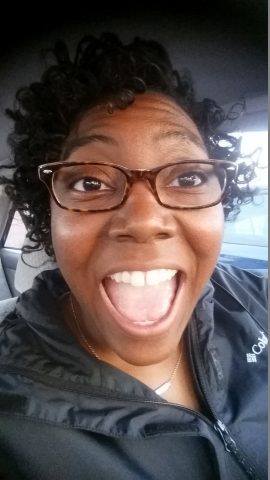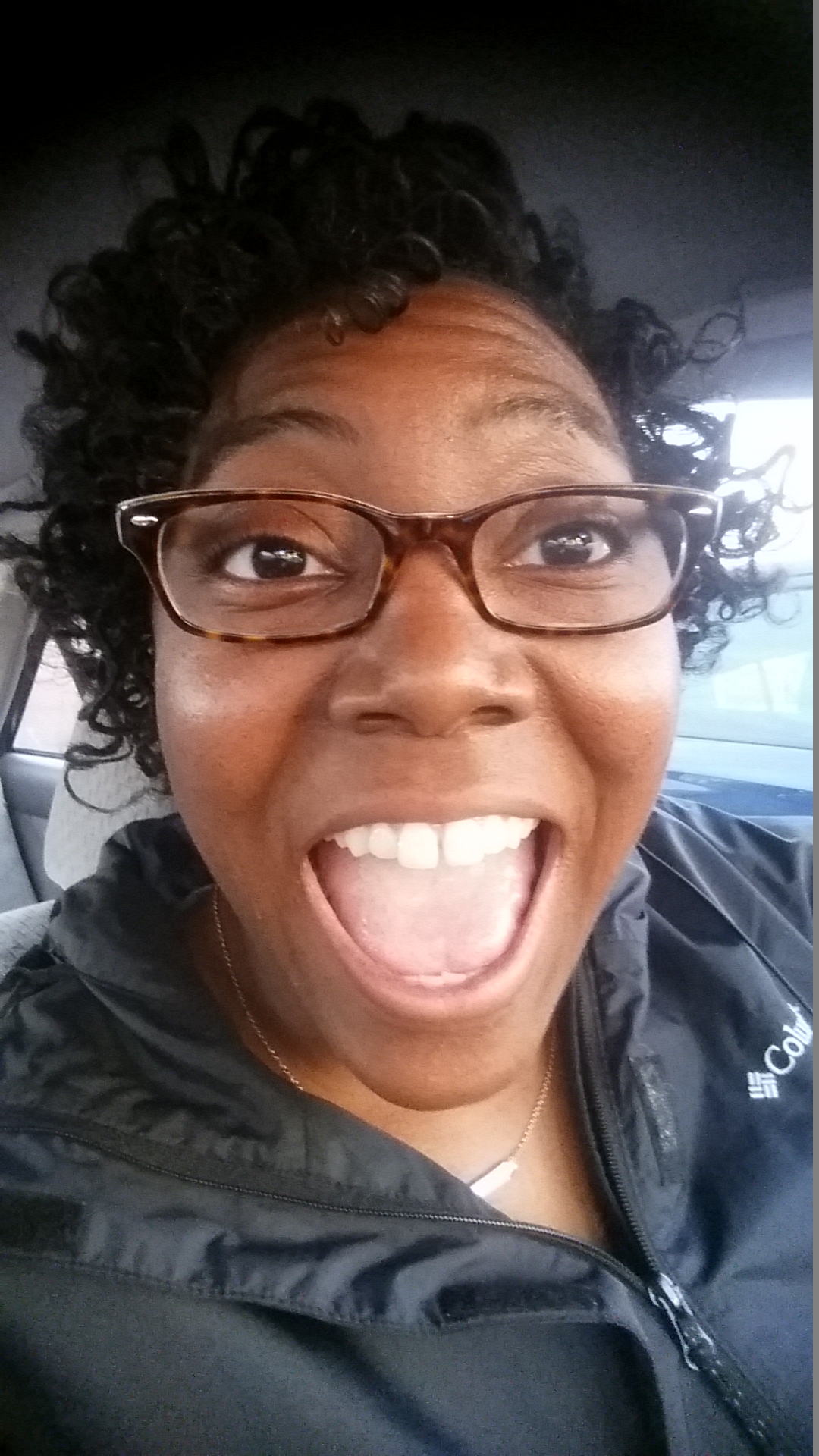It Only Takes a Spark
By Leandra Stuckey, PTA Student
Metropolitan Community College – Penn Valley, Kansas City, MO
Grad Date: May 2017

Italian poet and moral philosopher Dante penned the following words in his magnum opus,The Divine Comedy, “A mighty flame followeth a tiny spark.” Today this quote can be translated as, “from the little spark bursts a mighty flame.” Though there are many ways to create a fire, there always needs to be a spark to ignite a flame. As a Girl Scout, I learned that a conventional fire requires three elements to ignite: oxygen, a heat source and fuel. If any of these three elements are missing, you will not be able to start a fire. Through my clinical and work experiences, I have learned there are three ingredients needed to create a spark and eventually a mighty flame in my patients’ lives. They are empathy, passion and a commitment to excellence and on-going professional development.
To create the initial spark needed to build a fire, it is important to build a rapport and have empathy for my patients. The role of a physical therapist assistant is multifaceted; I am what my patient needs me to be. One of my instructors described the role of a change agent as a chameleon wearing a referee’s shirt, a priest’s collar and a used car salesperson’s plaid jacket. I think his example provides a blueprint on how to be an exceptional therapist. The chameleon shows that even though my message may be the same to multiple patients I am able to change the appearance in order to reach each of my patients. As the referee, I am an honest broker between different groups, like family and the healthcare team. As the priest or counselor, I listen to my patient hearing problems and accepting suggestions. Finally, the salesperson’s plaid jacket is used to represent my ability to analyze a patient and give a sales pitch about my treatment plan and why it may work for them. Being a therapist that exemplifies this chameleon challenges me to consider my patient’s life before their illness. In order to provide a holistic treatment plan, I have to build a rapport and figure out what their physical and recreational goals are and come up with a way to help them attain those goals while working within the framework my supervising physical therapist provides.
My job as a rehab tech gives me the opportunity to work with a diverse group of patients and diagnoses. During a shift, I was assigned to passively range a patient who had recently suffered a spinal cord injury when he fell out of a tree during work. I went into the patient’s room cheery and excited to practice the skills I was learning in school. The patient looked at me and asked why I was there. When I told him I came to stretch his upper extremities, he gave me an obstinate look and said, “No.” Though I was taken aback by his response, I did not let my disappointment show. Instead, I asked if I could do anything for him while I was there. He asked for a drink of Pepsi and if I could fix his covers. As I proceeded to make him comfortable in bed, I talked with him about his family, life and work. I took note of the personal decorations he had hanging in his room and talked with him about those, not once mentioning therapy. When I was getting ready to leave, he asked if I still wanted to stretch his arms. I eagerly agreed and continued to talk with him while doing passive range of motion. If I had not taken the time to make him comfortable and assess his needs as a person, as well as the needs of the patient, I do not think I would have had the opportunity to work with him. He was going through a hard transition in his life, trying to get used to the idea of never being able to walk again and wanted someone to listen to his worries. I learned more about empathy with that patient than I have in any situation prior.
The spark that began with total patient care needs to be nourished and protected before it can be coaxed into a flame. Getting up at 5:30 am in the morning each day is not natural for me. However, while I was completing my clinical, it was easy for me to wake up each morning at that time because I was excited for the things I would learn and the new challenges I would face. I am passionate about physical therapy and the things it makes possible. This passion is the spark that gives me a drive to work hard, the energy to get through the day, and the ability to be more creative with my treatments. I will use my passion to meet and eventually overcome the intrinsic and extrinsic barriers my patients are dealing with. To protect the spark in my patient, I may need to deal with intrinsic barriers they may be facing like depression, self-limiting behaviors, and maintaining reasonable goals. To address these influences I will need to meet each area head on, listen to their concerns and search diligently for solutions. Sometimes, I may be able to find a therapeutic answer and other times I may have to consult my supervising therapist to help me find a way to break down the barrier. The extrinsic factors may affect self-esteem and ability to work with therapy. It is then that I need to figure out ways to bring therapy to them. This could mean starting therapy in their room until my patient is able to come to terms with a new amputation or bringing family on board to encourage and motivate my patient to keep pushing through their fatigue to reach their goals.
Even though I have not had a traumatic injury or needed physical therapy, I can still relate to my patients by sharing with them my stories of failure. Losing my high school student council election taught me to be transparent with my intentions, vision and goals when convincing others to follow me. Not getting into a doctorate of physical therapy program the first time I applied made me find another path to accomplish my goal. Failing a test and a practical on the same day showed me, that I must be prepared in order to be successful. My stories may be small in comparison to a traumatic injury, but losing something is a blow to the ego no matter what was lost. I believe this will help me coax a flame in my patients because each of my failures has set me on the path to be a better physical therapist assistant and leader, just as each of my patients’ failures in therapy will help them to improve their quality of movement and be one step closer to reaching their goals.
Finally, maintaining the flame I worked to create throughout the continuum of care requires me to be a life-long learner. Having empathy and passion will only get me so far if I am not willing to put in the effort to continue growing and raising the bar on the care I provide. I have a commitment to continue gathering more knowledge and sharing that with my team so that we can improve the level of care we are able to provide to our patients. When a patient presents with a challenge that seems too big or beyond my abilities, I search diligently for solutions consulting my mentors, classmates, textbooks and the Internet for ideas to get the desired outcome. I plan to continue taking CEU’s and would eventually like to become certified in neurologic physical therapy. I still have much to learn but each new patient I get relights the spark and passion that I have for this field, and I hope that I am able to initiate a spark in them.
As a Girl Scout, I learned that I do not need a blowtorch to create a fire; from a tiny spark bursts a mighty flame. For me, I want to use empathy, passion and my willingness to learn throughout the continuum of care to create a spark in the lives of my patients. In order to optimize movement and improve each patient’s outcome, it will be important to use all of my experiences to shape the treatment plan as there is simply no “one size fits all” regimen. My passion dares me to be the spark that ignites a mighty flame to motivate my patient down the road to recovery. I can continue to bring a spark to my patients by being an innovative physical therapist assistant that is committed to using all of my skills to care for the whole person.

